





















Technical Foundations
The Web could be implemented on top of another kind of message-routing system beside the Internet.
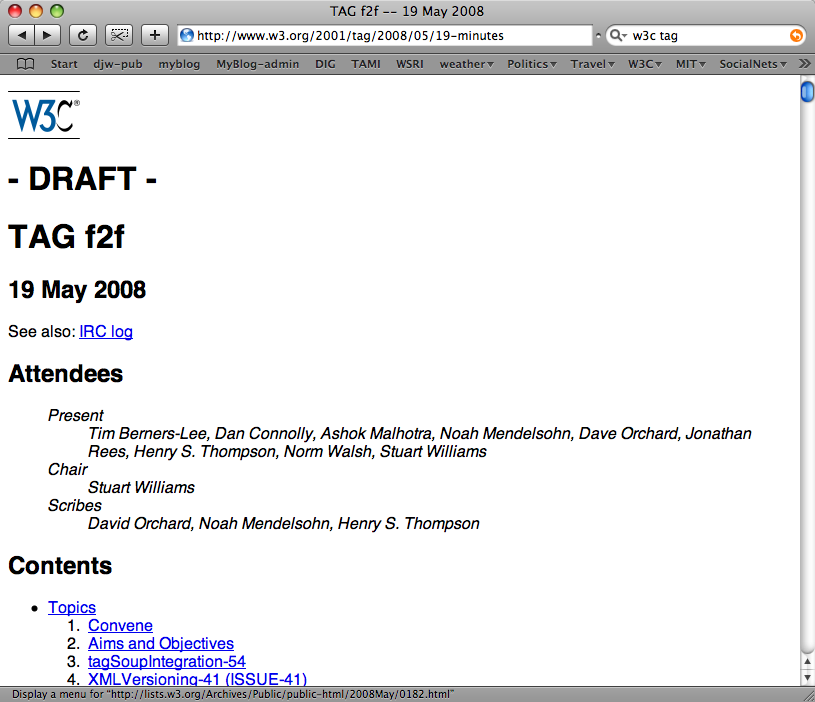
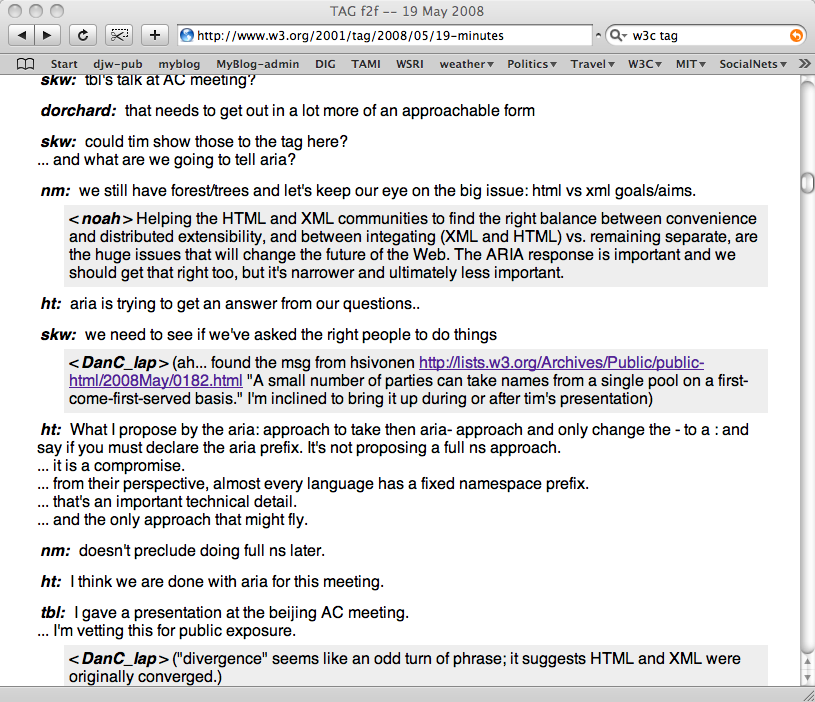
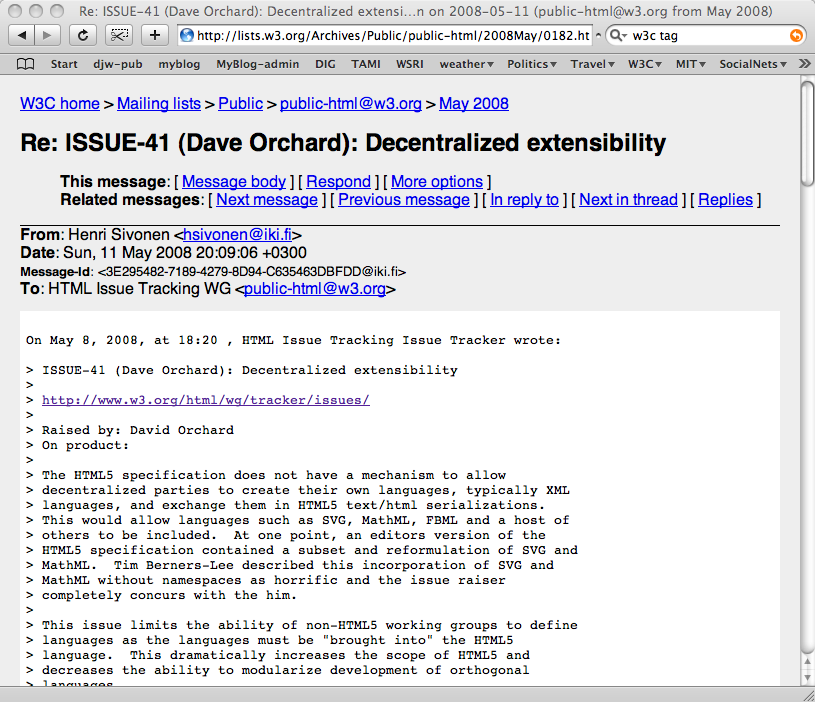

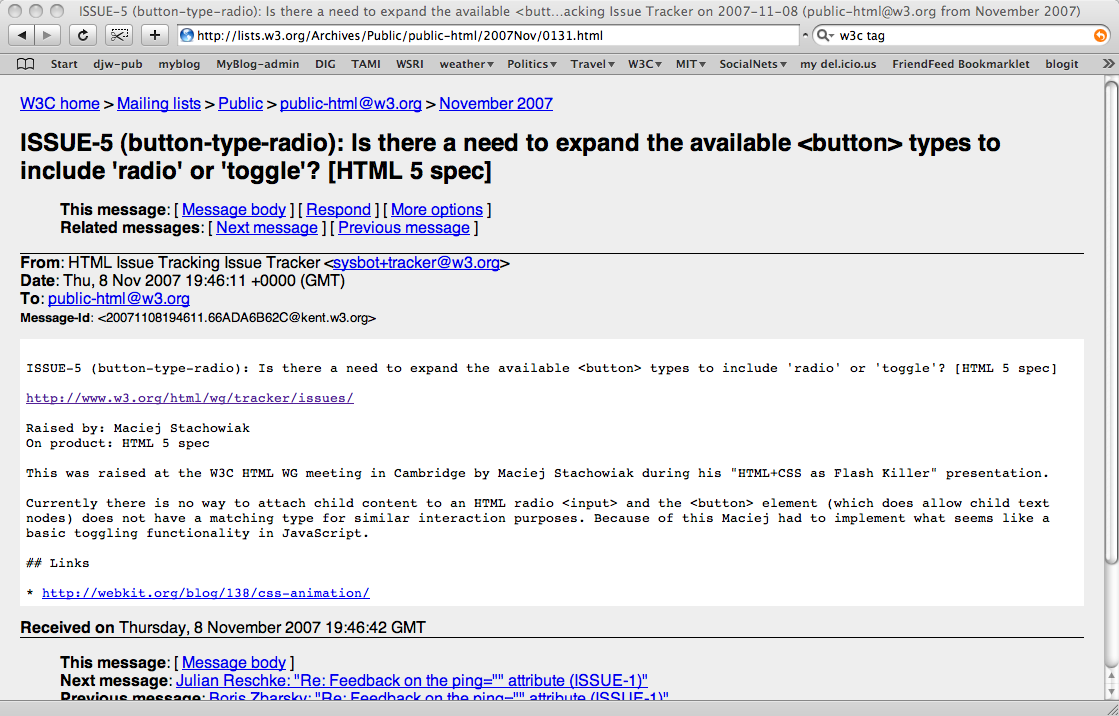
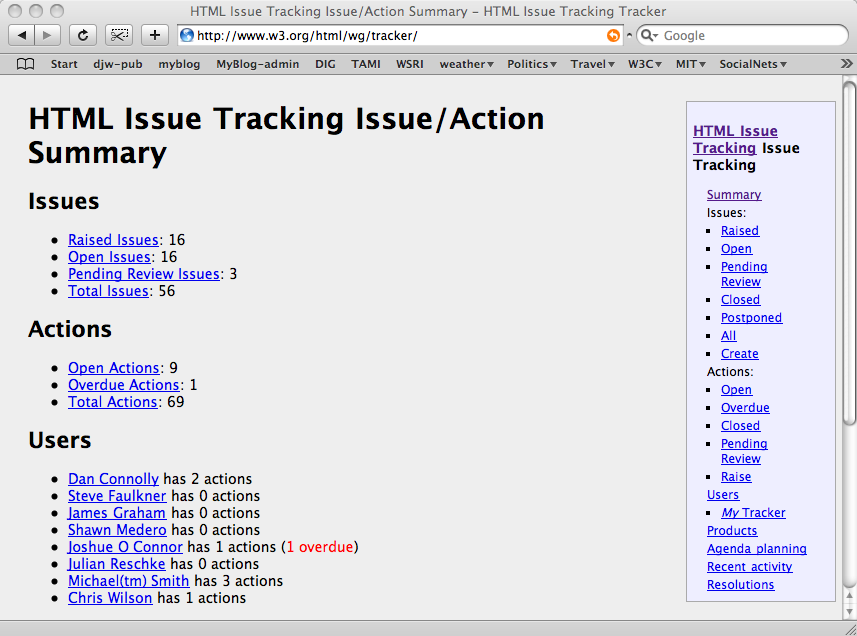
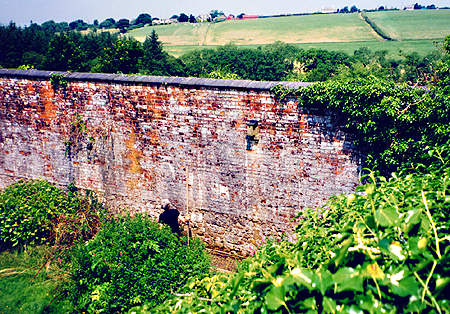
Much of Web 2.0 is based on walled gardens, otherwise known as data warehouses
Users create content, and possibly value, often for free, but they lose control of their data and where even their data is.
ClaimID: Your data is spread throughout the online world...and mostly not under your control
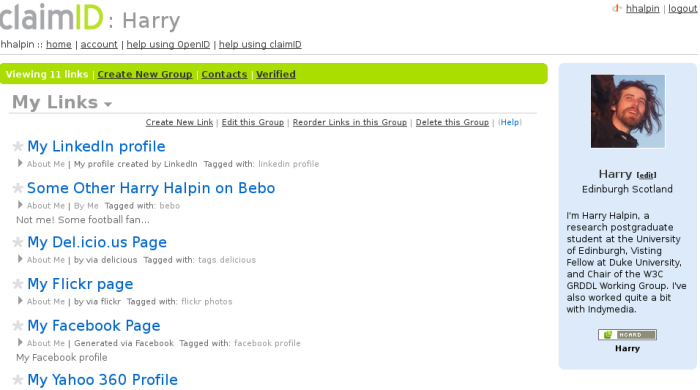
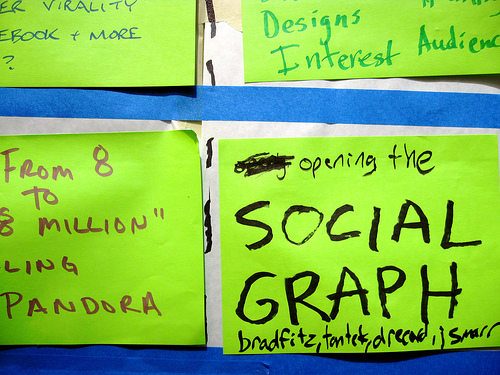
Users are increasingly wanting more and more powerful applications to access their social data - and having that data behind a firewall just won't do in 2008.
The DataPortability.org to the rescue.. Danny Ayer's Video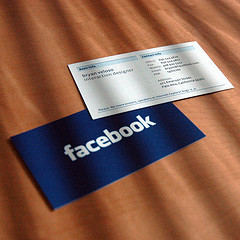
Similar to "browser wars," there now are competing ways to share social graph data on the Internet.

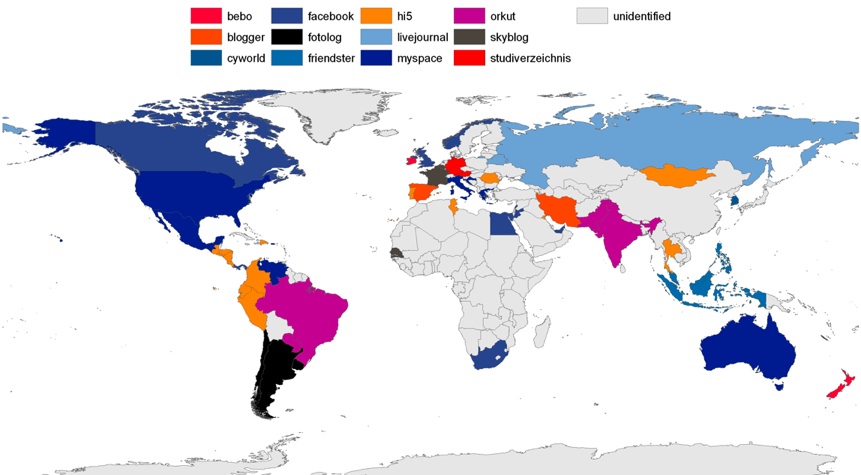
Applications are only as good as the data they can access.
Unfortunately, most data is trapped in idiosyncratic HTML!
or in databases behind firewalls...
Liberate the data and put it in a common universal format for accessing by our Web 2.0 applications?
... is an open world and universal space for machine-readable data.
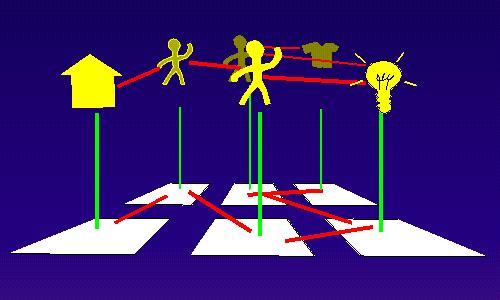
To a computer, then, the web is a flat, boring world devoid of meaning...This is a pity, as in fact documents on the web describe real objects and imaginary concepts, and give particular relationships between them...Adding semantics to the web involves two things: allowing documents which have information in machine-readable forms, and allowing links to be created with relationship values. TimBL, WWW1994
The Web as a Totalizing System
Increasingly all data is on the Web: a universal information space
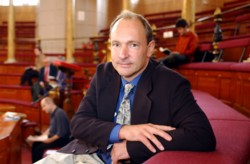
This specification does not limit the scope of what might be a resource; rather, the term "resource" is used in a general sense for whatever might be identified by a URI. Familiar examples include an electronic document, an image, a source of information with a consistent purpose (e.g., "today's weather report for Los Angeles"), a service (e.g., an HTTP-to-SMS gateway), and a collection of other resources. A resource is not necessarily accessible via the Internet; e.g., human beings, corporations, and bound books in a library can also be resources. Likewise, abstract concepts can be resources, such as the operators and operands of a mathematical equation, the types of a relationship (e.g., "parent" or "employee"), or numeric values (e.g., zero, one, and infinity).IETF RFC 3986, URI Generic Syntax,January 2005 by Berners-Lee et. al.
Hypertext links web-pages via the use of a URI at the target.
The Semantic Web just allows us to link anything that has two URIs

<http://www.example.org/Harry#> foaf:name "Harry Halpin"; <http://www.example.org/Harry#> foaf:homepage <http://www.ibiblio.org/hhalpin>.
Note the relationship to HTML links, especially with the re-discovery of the rel attribute.


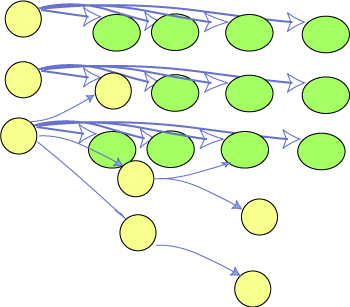
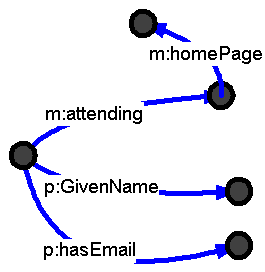
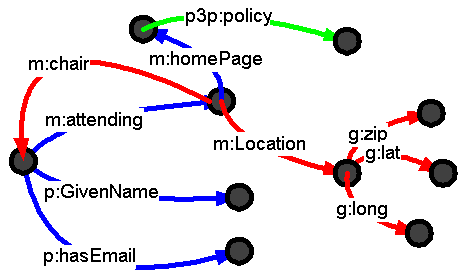
Subject and object node using same URIs

Verb/predicate/Property using same URIs
One of the earliest and most popular Semantic Web vocabularies.
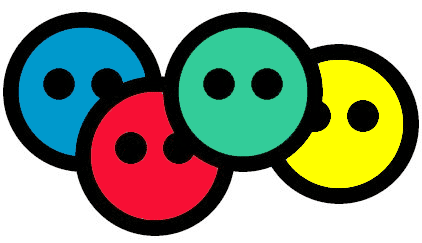 RDF markup for Person, mbox, homepage, workplaceHomepage, schoolHomepage, knows and also for things that we are in or make, like primaryTopicOf and depicts.
Linked in a (semantic) Web to other FOAF files and arbitrary RDF Data.
Designed to be independently extended without breaking due to using RDF technologies.
RDF markup for Person, mbox, homepage, workplaceHomepage, schoolHomepage, knows and also for things that we are in or make, like primaryTopicOf and depicts.
Linked in a (semantic) Web to other FOAF files and arbitrary RDF Data.
Designed to be independently extended without breaking due to using RDF technologies.
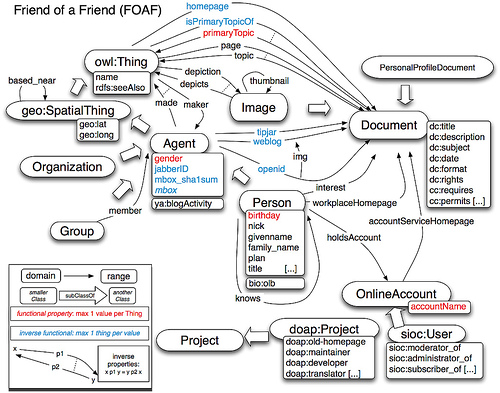
Check out Alexander Passant's foafmap.net mash-up of FOAF and Google Maps - here's me.
You can generate FOAF from Facebook profiles automatically using Matthew Rowe's FOAF Generator Facebook Application
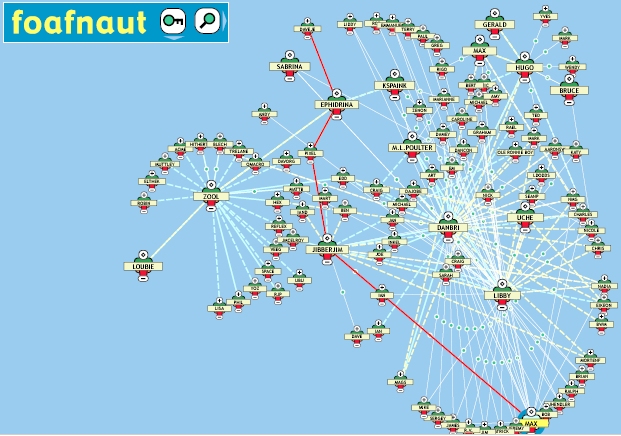
We need to integrate privacy and trust issues with FOAF
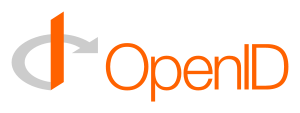
OpenID is a way of a user "logging-in once" to a service provider and then having their log-in details be verified by a trusted identity provider.
Your new OpenID username is a globally-unique URI:href="http://openid.claimid.com/hhalpin">http://openid.claimid.com/hhalpinClaimID gave me an OpenID...so can many others...
Sound familiar?
Tim Berners-Lee: "The Architecture of the World Wide Web says that everything of importance deserves a URI. Go ahead and give yourself a URI. You deserve it!"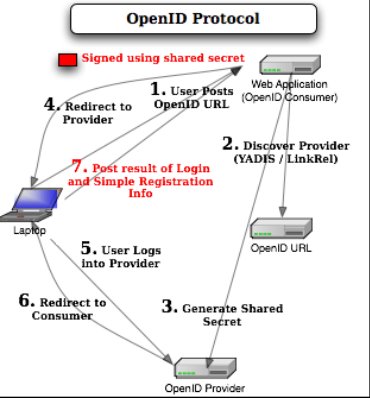
Go use your OpenID (list from LifeWiki
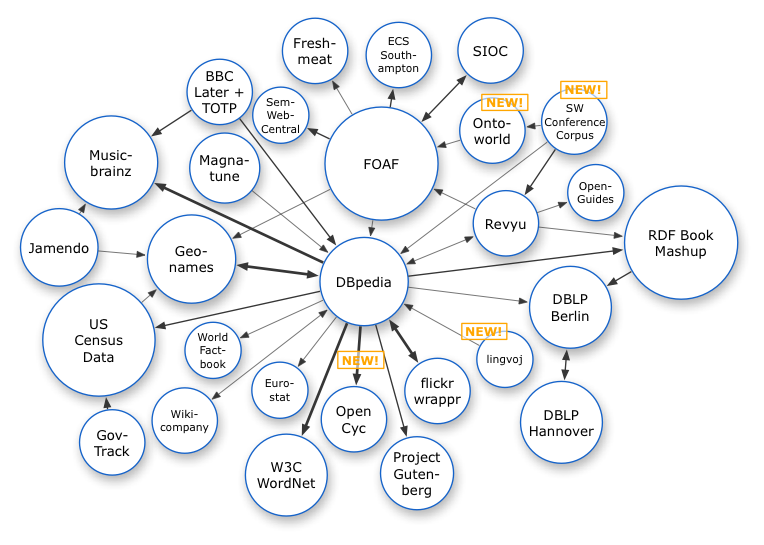

 There is no technical reason why the social data in your e-mail account is kept artificially separated in your mobile phone, your social networking site, blog ...
There is no technical reason why the social data in your e-mail account is kept artificially separated in your mobile phone, your social networking site, blog ...
The two questions are:

Allows a much-looser and quicker moving form than a Working Group for exploratory purposes, allows creation of a Working Group in a year to be sped up!
Can be a forum inside the W3C to get the diverse bodies interested in social networking communicating.
Harmonize and stabilize relevant standards and think through privacy and identity issues with the Semantic Web.
Anyone can join as an Invited Expert and completely open - contact me or Dan Brickley.
If a W3C Member - interested in joining or co-sponsoring group?We need social scientists and social networking experts!
Starting around October - help us create the charter on a wiki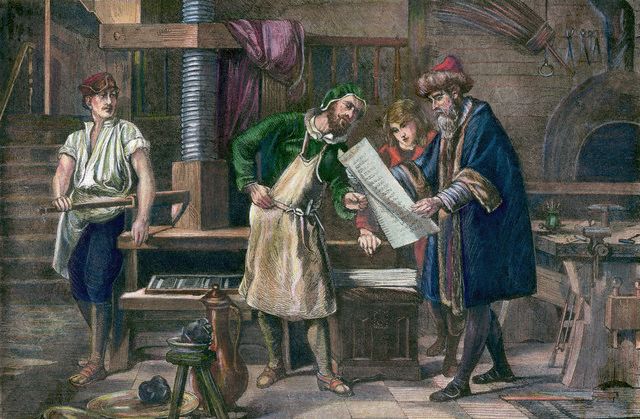
William Morris. A Dream of John Ball